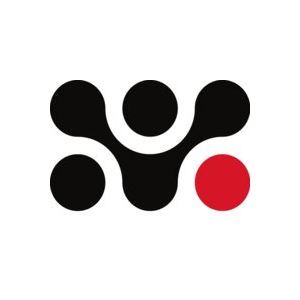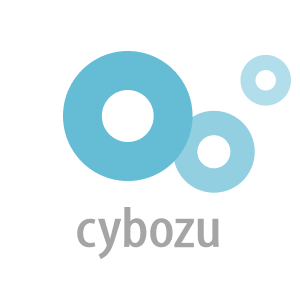Updated November 22, 2023
New Graduate Recruitment in Japan: The “Shinsotsu” System
Are you a new grad looking for a job in Japan? Then you'll have to navigate Japan's new grad recruitment system.
After all, we all have to work for a living. And finding a job that you don’t just endure but actually enjoy is a hard task. Especially when you're just starting out in your career.
Fortunately, Japan has a system in place to help with that. And even though it’s somewhat old-school, it has worked for ages. Some would say that it still works well to this day.
For the longest time, new graduates in Japan have been going through a system called 新卒採用, or Shinsotsu Saiyō. It's essentially Japan's system to recruit people right out of college. It's one of the two main ways to secure employment in Japan (the other is "mid-career" employment, or 中途採用 - Chūto Saiyō).
However, the system is a bit unique compared to some other countries, so it may take some getting used to.
So, in this post, I’ll explain the Japanese shinsotsu system in detail and tell you how the process works. I’ll also explain some related terms and talk about how Japan's recruiting landscape is changing.
First, let’s look at how the shinsotsu system works and what exactly it entails.
In this article: 📝
The Shinsotsu Saiyo (新卒採用) System and The Current Landscape of Hiring
As I explained in my Japanese salarymen post, Japan has always had a unique employment culture.
What has worked in Japan until now was the promise of lifetime employment, or simply put, job security at its best.
This meant that people would get to retire from the same company they first started working at at the beginning of their careers, and they would feel like they belonged to the company they worked for.
I explained this idea of belonging, or being a member of the company you work for, in my job-type vs. membership-type employment in Japan post, so check it out if you’re interested in learning more about this. Basically, membership-type employment involves a sense of belonging that results in the employee dedicating their entire career to the company’s prospects.
Of course, the employee gets life-long job security in return, which is big in Japan. This is why most employees don’t mind the long work hours or having to change locations at the behest of the company.
So, how do these companies hire their employees?
Well, there are mainly two types of recruitment methods in Japan, and these are the new graduate recruitment, also known as shinsotsu saiyo, and the mid-career recruitment systems.
As you may have guessed, those who work on membership-based employment are usually hired as new graduates through the shinsotsu system. So, let’s take a look at what the shinsotsu system is and how it works.
Shinsotsu Saiyo, Explained
Essentially, “shinsotsu saiyo”, also known as “new graduate recruitment,” refers to the practice of hiring candidates who are just about to finish graduate and undergraduate programs or vocational schools or are new graduates.
This means that companies can hire people when they’re still young and malleable, which allows them to teach whatever skills may be necessary for the job, no matter the candidates’ skills and experience or even their educational backgrounds to a degree.
According to Keidanren’s (Japan’s Business Federation) Charter of Corporate Behavior, which is embraced by over a thousand of the country’s biggest companies and forms the grounds for shinsotsu recruitment, companies must start and finish recruitment around the same time each year.
As Japanese students graduate from college in March, those who are recruited in the shinsotsu system start working in April, which is the shared onboarding time of the year for many companies in Japan.
This is beneficial for the students, as it allows them to focus on their studies and finals for the better part of their senior years and only deal with job applications during a certain period when everyone else is also on a job search.
However, in order for these graduates to start working right away, the applications have to be completed earlier than the final year of college. So, usually, students can start applying to companies starting from April 1st of their penultimate year in higher education.
A unique feature of the shinsotsu saiyo system is that candidates usually don't have any idea what the job they’re applying for entails. They simply apply to companies and are then placed in departments that may suit them once they’re hired. This means that applications aren’t limited to certain college majors, and pretty much everyone who has a degree can apply.
Job Hunting for Science Majors: Different Hiring Practices
Before I move on with the terminology and details of the shinsotsu system, as a quick disclaimer, I’d like to say a few words on what the hiring landscape looks like for science majors (STEM, technical field).
While the shinsotsu system and the hiring practices related to it I explained generally apply to those majoring in liberal arts and humanities, things can be vastly different for science majors.
For one, science majors usually don’t have to apply for hundreds of jobs that are void of an actual title, and they can even get hired for specific positions in their final year of college.
Unlike humanities and liberal arts majors, those majoring in a STEM field have the opportunity to get a job in a specialized, technical field by working at research laboratories or internships. This allows them to enter the professional world in their field much earlier than non-science majors.
Of course, it’s important to note that the description above doesn’t apply to all science majors. Getting hired for a specialized position out of college is definitely possible if you’re a science major at a renowned university, or have an extremely high level of expertise in your field as a graduate student.
Others who study in STEM-related fields but don’t possess such expertise or academic accolades, on the other hand, may very well have to go through what a liberal arts major goes through within the shinsotsu system.
A Better Experience for Those Breaking New Ground
Among all STEM-related fields, new graduates are in particularly high demand in highly technical, recently popularized fields such as Artificial Intelligence (AI) and data science.
It even shows in average salaries. For instance, the annual salary for new IT engineers at major Japanese companies, such as DeNA is 5 to 10 million Yen, while the starting salary begins from 6 million Yen for a new graduate specializing in AI.
Additionally, since 2019, the Japanese technology group NEC has been offering to pay an annual salary of over 10 million Yen to candidates who have submitted papers to prestigious academic conferences and have exceptional accolades.
Sony has also started an initiative for more personalized salaries for its employees, offering an annual salary of approximately 7.3 million Yen starting from the first year for those highly skilled in new technical fields such as AI.
Judging by this, it’s safe to say that those who are breaking new ground and are at the forefront of innovation have a much better hiring experience overall in Japan. Companies absolutely favor hiring highly accomplished new graduates from renowned universities and offer compensations that far exceed the market average.
So, while the companies listed on the Japan Dev job board work in technical fields and mainly hire mid-career candidates with special skills, you can still find opportunities for new graduates.
Many companies on our job board are willing to hire computer science majors from respected universities and even offer them above-average salaries.
Related Terminology: New Graduate, Second-New Graduate, Mid Career, and More
If you’ve ever looked for jobs in Japan, you’ve likely come across terms such as new graduate, second graduate, and mid-career recruitment, so let’s explain what each means.
While you might think that the term new graduate refers to anyone who has recently finished college, it actually refers to only those who are about to graduate, or have just graduated and are in the in-between period between college and employment, which is called shukatsu.
Outside of the new graduate hiring, some companies may state that they accept second-new graduate (第二新卒採用, daini shinsotsu saiyō) candidates as well. Second-new graduate recruitment, in practice, means that you’ve only had job experience for one or two years before quitting and applying to a different job.
Once this period passes, however, your only chance of getting hired is by companies who state that they’re open to mid-career hiring.

Mid-Career Recruitment (中途採用 Chūto Saiyō)
The term may sound too vague or general at first, but in practice, “mid-career” in Japan refers to any candidate who has over three years of work experience.
While it still hasn’t exactly been embraced by traditional Japanese companies that hire new graduates in bulk, nowadays, mid-career recruitment is actually common among modern or international companies in Japan.
Tech companies are also in this group, of course, as these tend to have international work environments that follow Western standards of employment.
Needless to say, most of these companies also operate on a job-type employment system, where skills and experience are of utmost importance. This is, perhaps, the biggest difference that sets them apart from traditional companies that have membership-type employment, where the promise of great potential is valued above all else. If you haven’t, I urge you to see my post on job type and membership type employments.
On the brighter side, more and more companies have been slowly switching over to a more open recruitment system, and it’s becoming easier to find mid-career jobs in Japan.
Even companies that are more on the traditional side are slowly opening up to the idea in fear of falling behind on the trends of the modern business landscape.
As a candidate, it still may be hard to weed out these companies from the rest, but that’s exactly what we can help you do at Japan Dev.
If you’re looking for a job here in Japan, especially as a software engineer, designer, or product manager and as a mid-career candidate, but don’t know which companies value skill and experience (and hire mid-career candidates), you’re in luck.
On the Japan Dev job board, we feature modern companies in Japan that have the best employment practices and are personally vetted by our team. Make sure to check back frequently to see all the new opportunities at some of Japan’s best companies.
Common Hiring Practices in Shinsotsu Recruitment
Companies that follow the shinsotsu recruitment practice work differently than what you may be accustomed to in Western countries. These companies have more generalized departments and less specialized titles, which leaves no room for building expertise.
This, of course, leads to companies expecting less from employees in terms of skills and knowledge, and more in terms of personal sacrifice and potential.
I already talked about this in my post on job hunting in Japan, but if you’re applying for a traditional Japanese company through the shinsotsu system, all you need to show is a plain, professional look, and lots of potential.
While the Western method of hiring focuses on skills and experience, these are usually not important for companies that hire traditionally. In fact, these companies are usually looking to train their employees as they wish, and all they want in a candidate are basic skills, like maths and communication.
Instead of your accomplishments in school, what this type of company seeks is your ability to learn and comply.
As you’d expect, judging these qualities is mostly possible through interviews, so, companies that hire new graduates in bulk tend to do multiple rounds of interviews.
In addition to this, it’s quite common for companies to have a standardized test to eliminate the least favorable candidates, and this is where the company also gauges your basic skills in math, logic, and Japanese or English.
I talked about the interview process of these companies in more detail in my what to wear to a job interview post, and my top interview questions post can be another great guide.

Skills Favored by the Shinsotsu System
As you may be aware by now, the shinsotsu saiyo system of hiring sort of renders certain hiring criteria, such as experience and skill, irrelevant. After all, most of the time, candidates are hired while still in school, which leaves no room to gauge whether someone is actually good at the job or not.
So, naturally, the new graduate hiring system favors different qualities and skills in candidates, with the most important being potentiality.
In a potentiality-based hiring process, recruiters look for less tangible qualities in a candidate that can indicate their potential in learning the job or excelling at it. This way of thinking helps recruiters find good candidates for the job, even if candidates may not qualify in terms of educational background or skills needed.
In a way, you can say that these traditional companies are playing the long game.
Traditional companies in Japan don’t expect to immediately benefit from a candidate's expertise or experience but instead look for candidates who can be trained and eventually turned into compliant employees.
Of course, recruiters don’t just go by instinct. The signs of potentiality in a candidate can manifest in many ways. For instance, one of the most sought-after abilities in terms of potentiality is the candidate’s ability to communicate.
This, of course, is one of the most basic qualities to look for in any candidate, but there are other popular criteria as well, such as personal independence and cooperativeness, which help complete the assessment.
Lastly, among some other qualities companies look for to gauge the potentiality of a candidate are motivation, integrity, logicality, and problem-solving skills.
The Benefits and Downsides of the Shinsotsu System
By this point, it’s clear that while the shinsotsu system provides job stability and security in Japan, it’s far from being the end-all-be-all approach to employment.
In fact, in modern Japan, the system is even showing signs of failure due to the changes in business culture that give modern companies an incentive to embrace new employment practices that are more on par with Western ideals.
So, it’s obvious that while there are some benefits to the shinsotsu system, there are also some issues that put it at an obvious disadvantage in today’s workforce ecosystem. Let’s first highlight the benefits of the shinsotsu system, and then we’ll talk about the disadvantages the practice brings.
The Benefits of Shinsotsu Recruitment
It may sound outdated, but perhaps the biggest benefit of shinsotsu recruitment is that it saves both parties time and makes recruitment more predictable as there’s a clear timeline.
As companies hire at the same time every year, they’re able to create better and more streamlined HR practices that are both cost and time-efficient, while students are able to focus on job applications only during a certain period and get all of their applications out of the way at the same time.
The fact that hiring practices are streamlined also allows companies to develop better training programs for new employees.
This, of course, may not be a real benefit as it’s a natural result of companies hiring without experience or skill requirements, and whether it’s an advantage compared to the modern companies that hire solely based on skill and qualification is, admittedly, a bit blurry.
Still, there’s no doubt that shinsotsu recruitment makes breeding and fostering a corporate culture much easier.
In such an environment, it’s only natural that employees feel like a part of a family. As you’d expect, this works very well for the company’s benefit too, as working for the company is the common ground that brings the employees together in the first place.
Lastly, because the employees don’t really have to think about planning a career and there’s a system in place, another benefit of the shinsotsu recruitment type is that it gives employees peace of mind when it comes to salary increases.
Companies that adopt the shinsotu recruitment style usually have a membership-type employment system. So, all you need to do to get promoted is to spend a certain amount of time at a company. This means the longer you work, the higher the salary you’ll get, which makes things simple and foreseeable.
The Downsides of Shinsotsu Recruitment
I’ve already talked about this extensively in my post on job hopping in Japan, but perhaps the biggest downside of the shinsotsu recruitment system is that the company almost always has to train their employees from the ground up.
Not only does this cost time and money, but it also strips away the company’s opportunities to bring in talented, experienced people.
After all, experienced talent that has observed the industry from multiple angles can bring so much to the table. So, the traditional Japanese companies that satisfy the majority of their workforce needs by hiring candidates right out of college may end up missing out on the latest in the industry.
Of course, switching over from shinsotsu recruitment to an experience and skill-focused modern employment system is a whole other issue. When companies are so used to having set-in-stone HR practices and hiring cycles, adapting to a more flexible approach in hiring takes time, effort, and a whole lot of getting used to.
What’s more, this lack of flexibility in hiring also presents itself in the way the company operates. Companies with shinsotsu recruitment are usually slower to adapt to the changes in market conditions. In fact, companies that exist in relatively more volatile industries feel this effect more strongly than others.
Last but certainly not least, the shinsotsu recruitment system also creates immense pressure on graduates, making it more stressful to find a job than usual.
Because everyone gets hired in the same term, not being hired immediately puts too much pressure on candidates. It also makes it hard for “average” candidates to be picked out of thousands of applications simultaneously piling up in over a thousand companies’ HR departments.

Conclusion: The Future of New Graduate Recruitment in Japan
For the longest time, traditional Japanese companies have subscribed to the idea that the new graduate hiring system in Japan was what worked the best.
It did quite well, too.
The way everything went according to plan for both businesses and employees, the predictability of it all, the job security, and the sense of belonging to the company… It was all too tempting to change the system.
Besides, if you’ve read my post on the history of Japanese technology, you also know that this mentality is what got Japan to where it was when it was single-handedly leading innovation in the world.
However, just like anywhere else, the topography of business in Japan has also been changing rapidly. The effects of globalization are becoming too noticeable to ignore modern business practices anymore, especially when the traditional practices aren’t as efficient and hiring experienced and skilled candidates objectively saves both money and time.
So, while there are already many companies in Japan, such as the ones we feature on the Japan Dev company list, that hire competent candidates based on skill and experience, even more are eventually expected to switch to competency-based hiring in the future.
In the meantime, if you’re looking for a job in Japan, you can check the listings on Japan Dev, as well as our posts on the Japan Dev Blog where I introduced the best Japanese companies with remote work policies and worldwide remote O.K. policies.
Get Job Alerts
Sign up for our newsletter to get hand-picked tech jobs in Japan – straight to your inbox.









